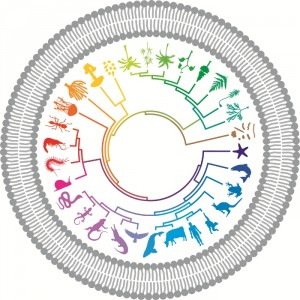
The evolution of predator-prey interactions yields interesting adaptations, resulting in some quirky phenomena. Snakes are a commonly-feared predator and people are familiar with (and dread) the venomous ones. There are two ways in which snakes have evolved to utilize their venom to capture prey. One method is to strike and hold, whereby the snake maintains its grip on the prey after biting and injecting its venom. This seems a perfectly reasonable strategy on the part of the snake. Alternatively, some snakes use a strike and release process: once envenomation occurs, the snake releases its prey, which seems on the face of it less reasonable but can be explained as a way of reducing the chances of retaliation. However, this method presents the problem of relocating the prey once the venom has taken effect.
It has proved remarkably difficult to establish how snakes achieve this feat. It is known that snakes use rapid tongue flicking to assay their environment and locate their prey, and that chemical cues in the tongue provide information to a snake’s vomeronasal organ, enabling them effectively to sniff out the envenomated animal. This lead to the development of a behavioural assay based on SICS – Strike-Induced Chemosensory Searching – which is used for various animals that employ their tongue as a chemosensory detector, such as viperid, elapid and colubrid snakes, as well as some lizards. Utilizing this assay, researchers sought the specific molecules given off by a struck prey that reveal its location. Testing cues such as prey urine, scent and alarm pheromones proved fruitless, as snakes did not respond to these obvious smells. So the mystery remained of how an animal, once bitten and injected with venom, produced an odor that provided an olfactory locator for the snake.
Now however, in a series of experiments reported in BMC Biology, Stephen Mackessy and colleagues have found evidence that it is a molecule in the venom itself that is responsible for prey relocation in vipirid snakes. They applied crude venom to euthanized mice and used the SICS assay to show a clear preference on the part of rattlesnakes for envenomated prey. The authors then fractionated and purified the whole venom into its component parts. They found that only one fraction could reproduce the preferential tongue flicking response which, surprisingly, was not an enzyme or other such catalyst. Mass spectrometry revealed that the molecules responsible were the disintegrins- crotatroxin 1 and crotatroxin 2. Disintegrins are proteins that bind to and antagonize beta integrin receptors; the finding that they play a part in prey location seems entirely unexpected.
Perhaps the Chinese year of the snake will herald greater insights into these predators’ hunting senses.
Comments